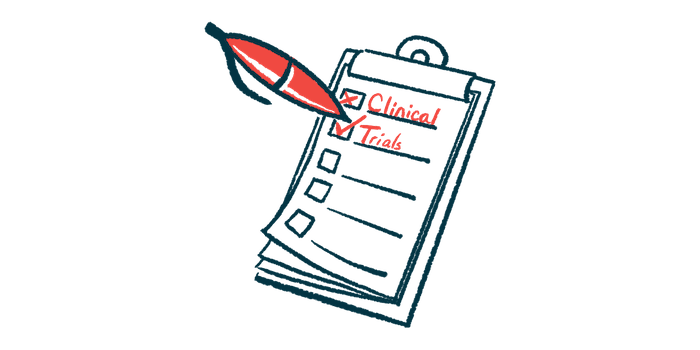Bravyl ALS trial starts next phase with patient receiving higher dose
Participants in lower-dose group saw disease progression slow

A Phase 2a clinical trial investigating Woolsey Pharmaceuticals‘ oral treatment Bravyl in people with amyotrophic lateral sclerosis (ALS) has dosed the first patient in the high-dose group, kicking off the next stage of the study.
The REAL clinical trial (NTC05218668) already showed signs of slower disease progression and reduced markers of neurodegeneration when 31 patients were given a 180 mg/day dose. It will now test a dose of 300 mg per day in about 15 more patients, which will help determine the optimal dose for a Phase 2b trial.
“The dosing of the first participant at 300 mg is another important program milestone,” Sven Jacobson, CEO of Woolsey, said in a company press release. “This next phase will allow us to evaluate the safety and tolerability of a higher dose, in preparation for our planned Phase 2b study.”
People with ALS tend to have elevated levels of an enzyme called Rho kinase. This protein plays a number of important roles, but it also prevents cell growth and nerve cell regeneration, and contributes to inflammation and cell death. It has emerged as a promising therapeutic target for ALS and other neurodegenerative conditions.
Bravyl is an oral formulation of fasudil, a compound that has shown promise in mouse models of ALS, preventing nerve cell loss, improving motor function, and extending the animals’ survival.
Low-dose group saw NfL levels drop, disease progression slow
The open-label REAL study, which began in 2021, is testing the safety and efficacy of two doses of Bravyl in adults with ALS, ages 18 to 75. In the first group, 31 participants received a dose of 180 mg per day for six months, after which they could continue on treatment for another 2.5 years in an extension part. Some have been treated for as long as 1.5 years.
After six months, participants given this dose experienced a significant reduction — by 15.5% — in levels of neurofilament light chain (NfL), a biomarker of nerve damage.
While the trial lacked a placebo, or control, group, it’s generally known that ALS patients tend to experience NfL increases of about 11% in six months. This suggests that Bravyl may decrease NfL levels by as much as 26% when compared with a control group.
Moreover, greater reductions in NfL were correlated with less deterioration in the ALS Functional Rating Scale-Revised (ALSFRS-R), which assesses the ability of performing everyday activities and is used as a measure of disease progression.
Results after one year in this initial group were compared with data from another 31 patients included in the Ceftriaxone ALS study database, who were matched for factors such as age, ALSFRS-R scores, and time from disease onset so the two groups were as similar as possible.
Data from this comparison showed that Bravyl significantly slowed lung function decline — by 42% — and slowed muscle strength decline by 50%, which was mostly driven by preserved lower-limb strength. The treatment also tended to slow disease progression by 28%, but the findings were not significant.
The high-dose group will be treated with a 300 mg daily dose of Bravyl also for six months, followed by an optional 2.5-year extension part. Participants will be monitored to assess safety as well as changes in ALSFRS-R scores, lung function, and muscle strength. Top-line data is expected in 2026, and the trial is expected to conclude in 2028.
“Our goal is to continue to advance development of Bravyl for people living with ALS, in hopes that we can slow the progression of the disease and improve their quality of life,” Jacobson said.




